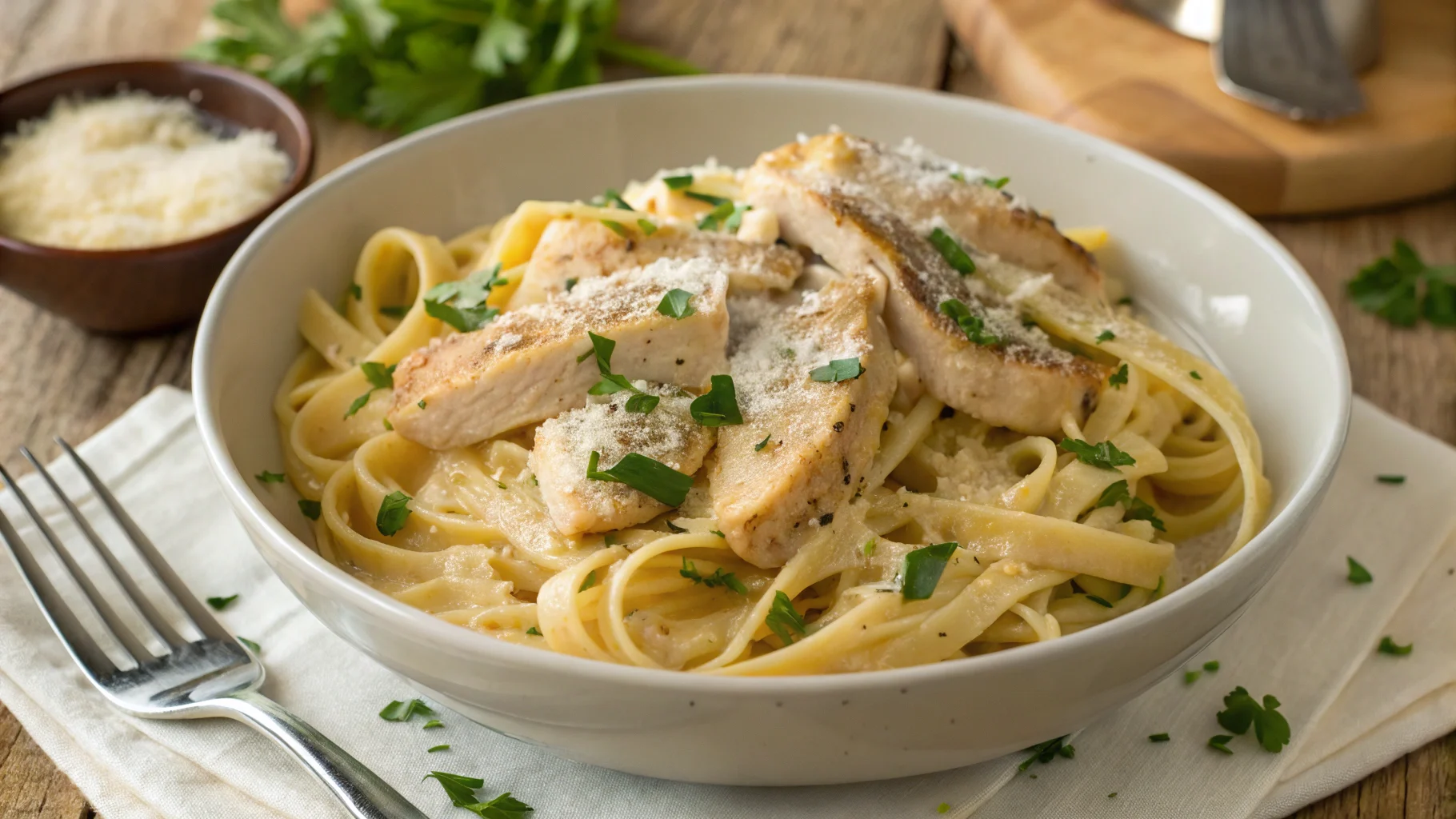When winter rolls in and the first real snow blankets the yard, there’s one magical recipe that turns that fluffy white powder into a dessert worth remembering—Snow Cream Recipe. Unlike traditional ice cream, this snowy dessert is quick, fun, and made from ingredients you probably already have in your kitchen. With just a few scoops of clean snow, some milk, sugar, and a splash of vanilla, you can whip up a nostalgic winter treat that’s been loved for generations.
Whether you’re making a snow cream recipe for curious kids or reliving your own childhood memories, this snowy tradition is more than just dessert—it’s a seasonal ritual. On a chilly day, there’s something whimsical about transforming snow into something edible, creamy, and sweet.
Check out our guide on Classic Quaker Oatmeal Cookies to pair with a warm drink after enjoying your homemade snow cream.
Snow Cream Recipe
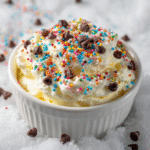
Snow Cream is a magical winter dessert made from freshly fallen snow, milk, sugar, and vanilla. It’s a nostalgic, no-churn treat that’s creamy, sweet, and incredibly easy to make in under 10 minutes. Perfect for snow days, curious kids, or a cozy seasonal tradition, this recipe brings the fun of the outdoors right into your bowl!
- Large mixing bowl
- Measuring cups and spoons
- Whisk or spoon
- Spatula or wooden spoon
- Scoop or ladle
- Serving bowls
- Clean container or bowl
- 8 cups freshly fallen (clean snow (light and fluffy))
- 1 cup whole milk (or dairy-free alternative like coconut or almond milk)
- 1/3 cup granulated sugar (or maple syrup/honey)
- 1 teaspoon vanilla extract
- Pinch of salt
- Optional Toppings:
- Sprinkles
- Chocolate chips
- Crushed cookies
- Caramel or chocolate syrup
- Chopped nuts
- Whipped cream
- Chill your mixing bowl in the freezer for 5–10 minutes to keep the snow cold while mixing.
- In a separate bowl, whisk together the milk, sugar, vanilla extract, and salt until fully dissolved. This forms your liquid base.
- Gather 8 cups of fresh, clean snow from a safe surface—avoid snow from the ground or near roads.
- In the chilled bowl, pour the liquid base over the snow slowly while gently folding with a spoon or spatula. Mix just until a soft, creamy texture forms.
- Serve immediately in chilled bowls. Top with sprinkles, chocolate chips, or your favorite add-ins if desired.
Snow Safety Tip: Only use snow that has fallen for at least 30 minutes. Avoid snow from ground level, roads, or rooftops.
Dairy-Free Option: Use almond, oat, or coconut milk and sweeten with maple syrup or honey.
Southern Variation: Use 1 can (14 oz) sweetened condensed milk instead of milk and sugar for a richer flavor.
Appalachian Twist: Add honey or molasses, fruit puree, or a splash of whiskey for grown-ups.
Storage: Best enjoyed immediately. Can be frozen for up to 1 hour—revive with a splash of milk if needed.
What Is a Snow Cream Recipe?
A Quick Introduction to Snow Cream
A snow cream recipe is a creative twist on traditional ice cream, crafted using freshly fallen snow as the main ingredient. Sometimes called “snow ice cream,” this winter favorite transforms clean, powdery snow into a creamy, sweet frozen dessert. All it takes is a mix of snow, milk (or a dairy-free alternative), sugar, and vanilla extract. The result? A homemade treat that captures the magic of snow days in every spoonful.
What makes the snow cream recipe so appealing is how fast and easy it is to prepare. There’s no ice cream maker, no lengthy freezing time, and no complicated tools. Just a bowl, a spoon, and freshly gathered snow. Perfect for spontaneous winter fun or as an educational snow day activity, snow cream is a recipe that’s as fun to make as it is to eat.
How Snow Cream Differs from Regular Ice Cream
Although snow cream recipes resemble traditional ice cream in look, the differences in texture and method are quite noticeable. Traditional ice cream requires churning and extended freezing, while snow cream relies on the airy texture of snow to create its smoothness.
| Feature | Snow Cream Recipe | Traditional Ice Cream |
|---|---|---|
| Base Ingredient | Fresh Snow | Cream & Milk |
| Preparation Time | Under 10 minutes | Several hours (including freezing) |
| Equipment Needed | Bowl & Spoon | Ice cream machine or mixer |
| Texture | Light, airy, melts quickly | Dense, smooth, creamy |
| Flavor Variability | Highly customizable | Also customizable, but slower |
Another unique feature of the snow cream recipe is how easily it adapts to different dietary needs. You can swap regular milk with coconut, oat, or almond milk, use maple syrup instead of sugar, or add fruits and spices for variation. With so many possibilities, snow cream becomes more than a recipe—it becomes a winter tradition in every home.
The History Behind Snow Cream Recipe
Ancient Origins: Ice-Based Desserts Before Refrigeration
Long before freezers and electric ice cream makers existed, ancient civilizations were already experimenting with frozen treats. In China, as early as 200 BC, people mixed snow with honey and fruit juice to make simple frozen desserts. The Romans, too, were known to send runners to the mountains to fetch snow and ice, which they flavored with fruit pulps and sweeteners. These early culinary experiments are considered precursors to today’s ice cream—and, in many ways, to what we now call the snow cream recipe.
Unlike modern ice cream that depends on dairy, eggs, and machines, ancient snow-based desserts relied on nature’s own ingredients: clean snow and regional sweeteners. Though primitive by today’s standards, these desserts were considered luxurious and often reserved for royalty or the wealthy elite.
How Snow Cream Became a Southern American Tradition
Fast forward several centuries, and the snow cream recipe took on a new identity in the American South. With its occasional snowfall and strong traditions of family-centered cooking, the South embraced snow cream as a spontaneous treat made only when nature allowed. For many families, making snow cream wasn’t just about dessert—it was a treasured activity marking the magic of a rare snowy day.
Southern-style snow cream usually included basic pantry staples: milk (or cream), sugar, and a splash of vanilla. When snow began to fall, children would rush outside with bowls to gather fresh snow, while parents prepared the liquid base inside. This tradition continues today, passed down through generations as part of Southern wintertime nostalgia.
Snow cream also gained popularity in Appalachian regions, where recipes might include honey or molasses and even a dash of local whiskey for the grown-ups. These variations highlight how flexible and personal the snow cream recipe can be—each family adding its own twist.
While snow cream may feel like a homespun tradition, snow itself has long captured the attention of scientists and weather experts. Learn more about how snow forms and winter safety guidelines from the National Weather Service on snow safety and weather facts.
How to Make Snow Cream Recipe at Home
Step-by-Step Instructions with Tips for Best Texture
Making a snow cream recipe at home is one of the easiest and most satisfying winter activities. In just a few minutes, you can turn a fresh snowfall into a creamy, sweet frozen dessert. Here’s the foolproof method to get it just right.
Ingredients:
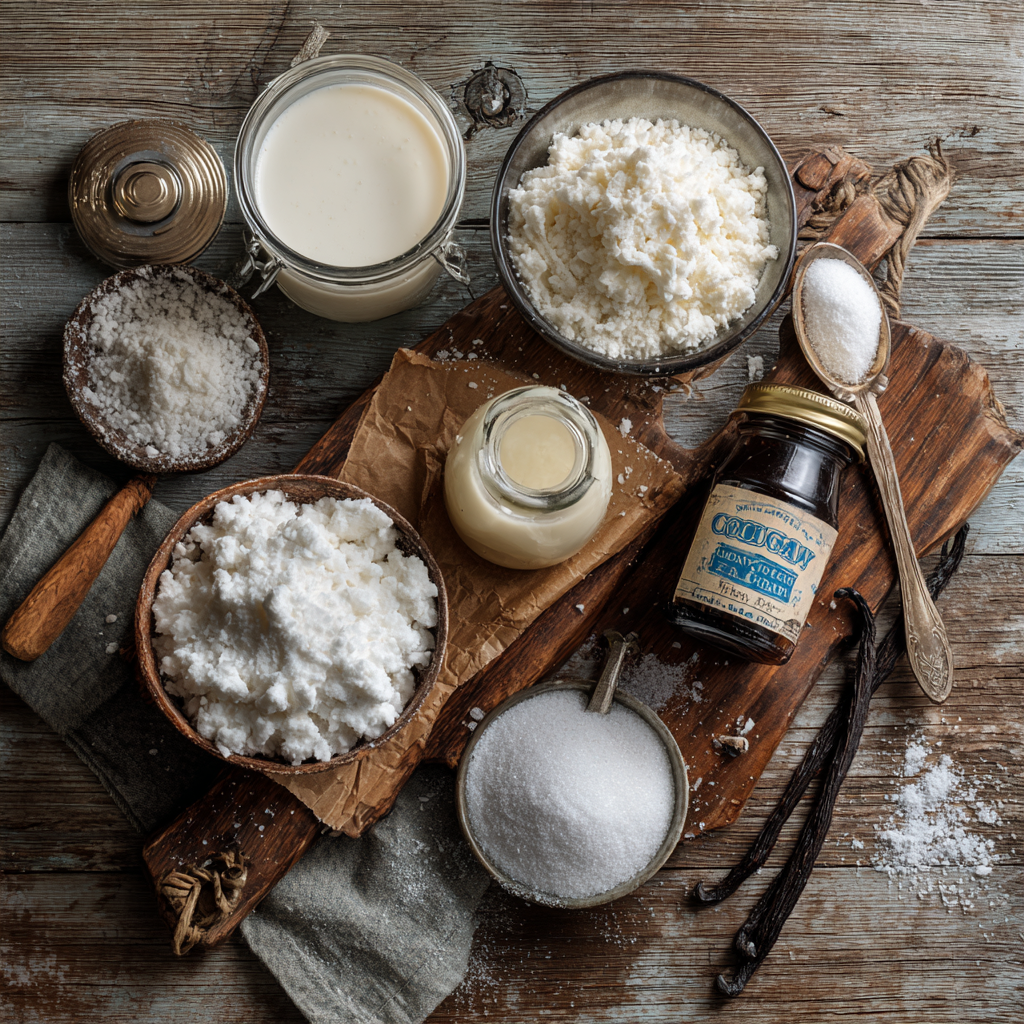
- 8 cups of freshly fallen snow
- 1 cup of whole milk or a dairy-free alternative
- 1/3 cup granulated sugar (or sweetener of choice)
- 1 teaspoon vanilla extract
- Pinch of salt
Instructions:
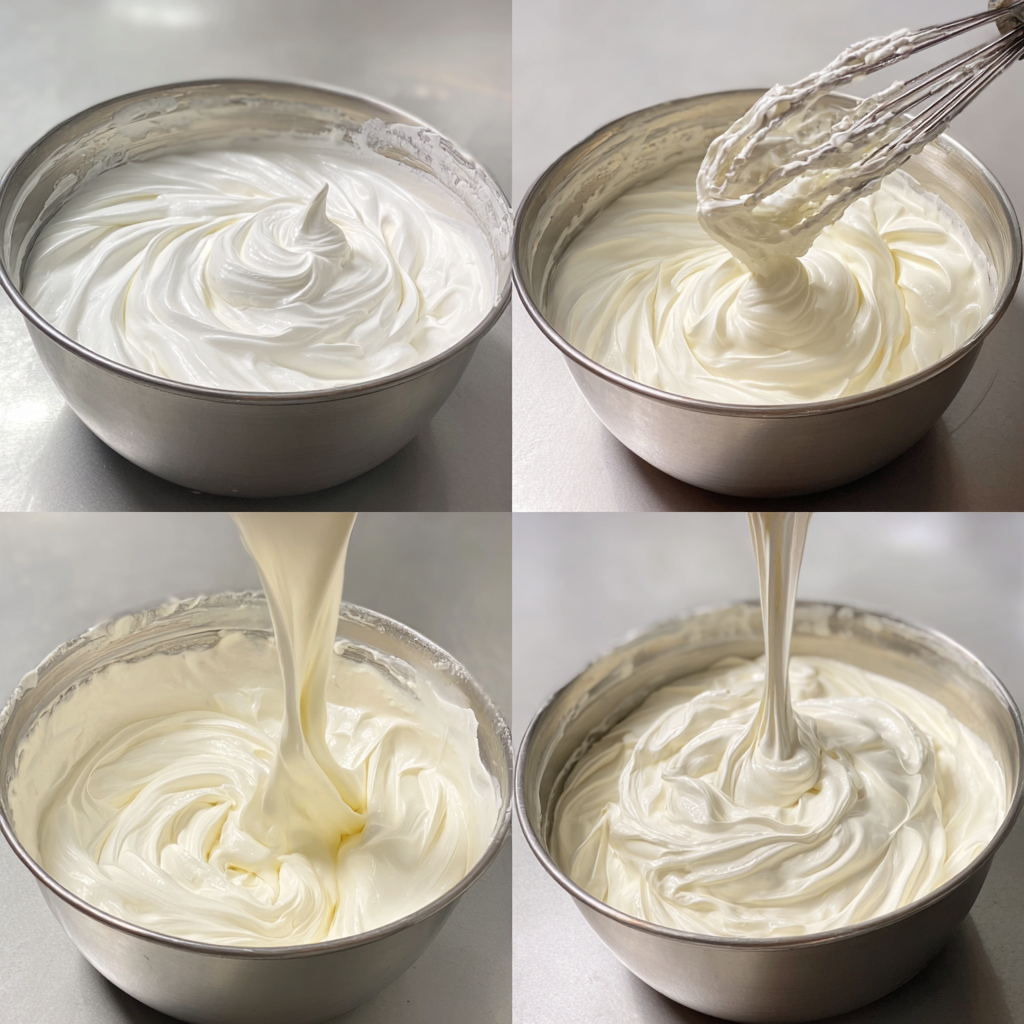
- Chill Your Mixing Bowl First
Place a large metal or glass bowl in the freezer for 5–10 minutes before starting. This helps keep the snow cold while mixing. - Mix the Liquid Base
In a small bowl or measuring cup, combine the milk, sugar, vanilla extract, and salt. Stir until the sugar is completely dissolved. This is your snow cream base. - Gather Fresh Snow
Using a clean container or bowl, collect about 8 cups of fresh, fluffy snow. Only scoop snow that has not touched the ground or been exposed to pollutants. - Stir Gently, But Quickly
Pour the liquid base over the snow and stir gently with a spoon or spatula. Mix until the snow absorbs the liquid and forms a smooth, creamy consistency—similar to soft serve. - Serve Immediately
Snow cream melts fast, so enjoy it right away! If you’d like, top it with sprinkles, chocolate chips, or a drizzle of syrup.
Don’t miss our Easy Chocolate Bun Recipe to level up your snow cream toppings.
How to Store and Serve Snow Cream the Right Way
While snow cream is best served fresh, sometimes you need a little wiggle room. Here’s how to handle storage and keep that texture as smooth as possible:
Storage Tips:
- Use an airtight container to prevent freezer burn and odor absorption.
- Freeze for no longer than 1 hour. After that, the texture becomes icy and less appealing.
- Revive with a splash of milk if it gets too hard—stir until smooth.
Serving Tips:
- Chill serving bowls before filling to slow down melting.
- Work quickly when mixing and serving—snow melts fast under room temperature.
- Add toppings last-minute to avoid soggy textures.
| Tip | Why It Matters |
|---|---|
| Chill tools & bowls | Helps preserve snow cream texture |
| Stir gently, not too long | Prevents snow from melting into slush |
| Serve in small batches | Keeps rest of the snow cream from melting |
A well-made snow cream recipe is all about timing and balance. With just a few key tips, your frozen treat can go from decent to unforgettable.
How to Safely Collect Snow for Snow Cream Recipe
Safety Guidelines for Gathering Snow
Using clean, fresh snow is the most important part of any snow cream recipe. While snow may look pure, it’s essential to follow safety precautions before eating it. Not all snow is created equal—some could contain dirt, debris, or even pollutants from the air.
Here are simple safety rules to follow:
1. Wait for Ongoing Snowfall
Don’t collect the first layer of snow. The initial snowfall can carry pollutants from the atmosphere, especially in areas with vehicle traffic or factories. Let it snow for at least 30 minutes before collecting.
2. Avoid Ground-Level Snow
Never scoop snow off the ground, roads, or rooftops. Always collect it from untouched, elevated surfaces like:
- Outdoor tables
- Snow-filled bowls left outside
- Clean patios or porch railings
3. Scoop the Top Layer Only
Use a clean spoon or measuring cup to collect only the top 2–3 inches of snow. Anything lower could contain dirt or other impurities.
4. Use a Clean Container
Store the snow in a clean, dry mixing bowl or a covered container. Keep it in the freezer if you’re not using it right away.
Learn how to ensure your snow is safe by following the CDC’s official guidelines on treating outdoor water and snow before consumption.
Alternatives to Real Snow (Shaved Ice, Crushed Ice)
If you’re uncertain about the snow quality—or you’re craving snow cream when there’s no snow outside—there are reliable alternatives.
Try These Snow Substitutes:
- Shaved Ice: Perfect texture mimic; use a snow cone machine or blender.
- Crushed Ice: Blend with milk and sugar, then freeze briefly before stirring.
- Store-Bought Ice Shavings: Some supermarkets sell crushed ice for drinks—great for emergency snow cream moments.
| Alternative | Pros | Notes |
|---|---|---|
| Shaved Ice | Closest to real snow | Soft texture, best result |
| Crushed Ice | Easy to make at home | Slightly chunkier, but still creamy |
| Frozen Coconut Fluff | Vegan-friendly & sweet | Great with coconut milk base |
Using alternatives may change the texture slightly, but you can still enjoy the flavors and joy of a snow cream recipe—even if it’s 70 degrees and sunny outside!
Southern vs. Appalachian Snow Cream Recipe
Southern Style: Sweetened Condensed Milk and Childhood Memories
In the Southern United States, the snow cream recipe isn’t just a dessert—it’s a beloved tradition tied to family snow days and cozy winter afternoons. While the base ingredients remain simple, Southern-style snow cream adds a few extra touches that make it richer and even more indulgent.
Here’s what sets it apart:
Key Ingredients in Southern Snow Cream:
- 8 cups of freshly gathered snow
- 1 can (14 oz) of sweetened condensed milk
- 1 teaspoon of vanilla extract
- Pinch of salt
Instead of using milk and sugar separately, sweetened condensed milk serves both purposes. It gives the snow cream a thicker, silkier consistency and a much sweeter flavor—something kids (and most adults) love.
This version is often made in larger batches, perfect for sharing among siblings, neighbors, and holiday guests. Southern families may top it off with sprinkles, marshmallows, or even crushed cookies to make it even more festive.
Appalachian Version: Rustic, Fruit-Infused, and Often Boozy
Appalachian-style snow cream recipes carry a rustic charm, deeply tied to old-fashioned, resourceful cooking. These mountain communities often relied on what was on hand: milk from the family cow, honey from the backyard, and fruit harvested in the summer and frozen for winter use.
What makes Appalachian snow cream unique?
Common Appalachian Twists:
- Use of whole milk or evaporated milk instead of sweetened condensed milk
- Sweeteners like honey, molasses, or brown sugar
- A splash of whiskey or bourbon for a grown-up version
- Fresh or preserved fruits like blackberries, peaches, or blueberries
Appalachian snow cream is often less sweet than its Southern cousin, with deeper, earthy flavors and a touch of local character. Families may even stir in homemade jams or top with chopped nuts for added richness.
| Feature | Southern Style | Appalachian Style |
|---|---|---|
| Main Sweetener | Sweetened condensed milk | Honey, molasses, or brown sugar |
| Milk Type | Condensed or whole milk | Whole milk or evaporated milk |
| Common Add-ins | Sprinkles, marshmallows, cookies | Fruit, nuts, whiskey |
| Texture | Smooth, thick, very sweet | Light, rustic, often earthy |
Both versions of the snow cream recipe celebrate regional identity and family traditions. Whether you prefer the candy-sweet richness of the South or the naturally flavored simplicity of the Appalachians, each spoonful tells a story of place, memory, and creativity.
Creative Variations of the Snow Cream Recipe
Chocolate, Maple, and Fruit Flavors to Try
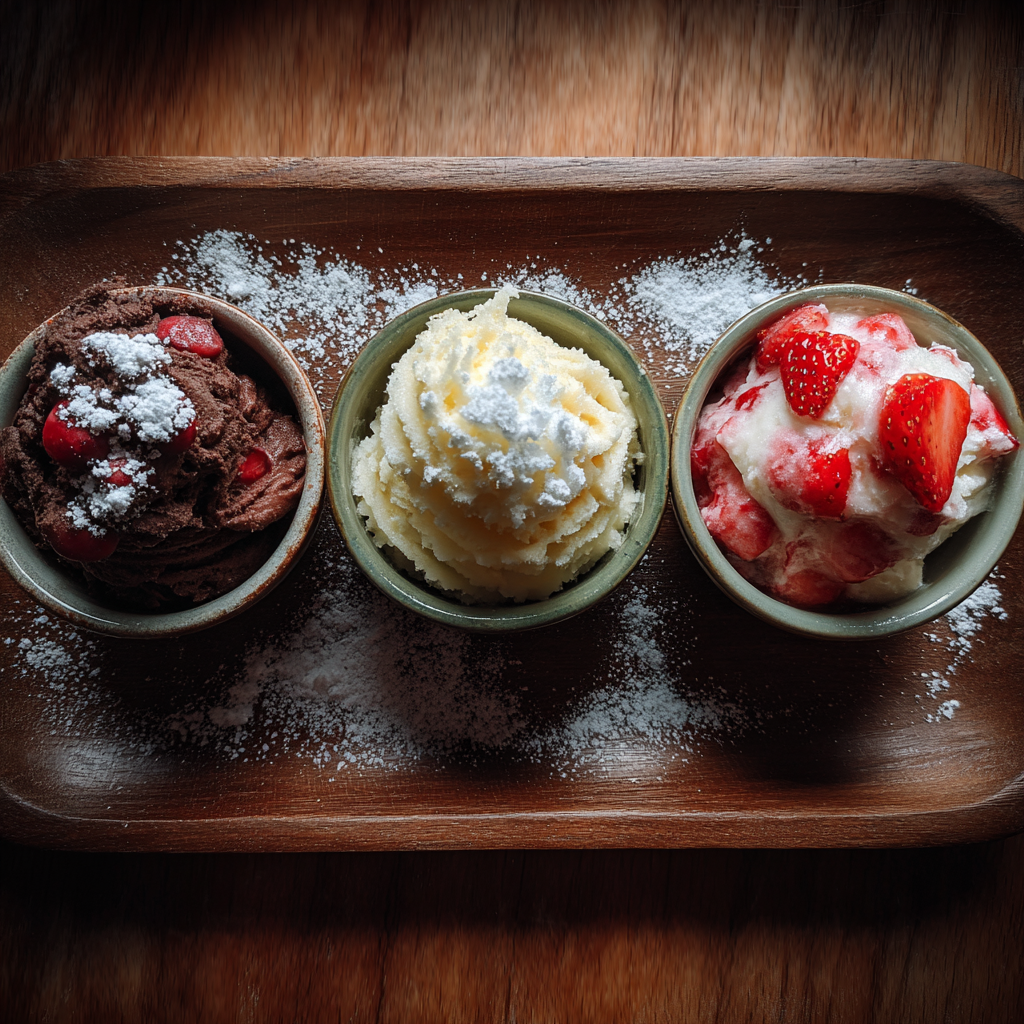
One of the best things about the classic snow cream recipe is how versatile it is. Once you’ve nailed the basic version, it’s time to experiment. Whether you love chocolate, fruit, or rich, caramel-like flavors, these variations will take your snowy dessert to a new level.
Chocolate Snow Cream
Chocolate lovers, rejoice. Add 1 tablespoon of unsweetened cocoa powder (or chocolate syrup) to your milk mixture before combining with snow. For a deeper flavor, toss in a pinch of instant coffee or espresso powder.
Strawberry or Berry Snow Cream
Puree ½ cup of fresh or frozen strawberries (or blueberries) and mix it with your milk base. This gives your snow cream a beautiful blush color and fruity sweetness.
Looking for something fruity? Try this Best Peach Crumble Recipe to serve alongside.
Maple Snow Cream
Replace granulated sugar with 2 tablespoons of maple syrup. This version has a rich, caramel-like sweetness that pairs perfectly with pecans or walnuts.
Coconut Snow Cream
Use canned coconut milk instead of regular milk and top with shredded coconut. Add a splash of vanilla or almond extract for extra flair.
Fun and Festive Toppings to Customize Your Bowl
Toppings turn a good snow cream recipe into a great one. Here’s a list of classic and creative add-ons you can mix in or sprinkle on top.
| Topping | Flavor/Texture Boost |
|---|---|
| Sprinkles | Colorful and fun for kids |
| Mini Chocolate Chips | Adds crunch and cocoa flavor |
| Crushed Cookies | Think Oreos, graham crackers, wafers |
| Caramel or Chocolate Sauce | Sweet and sticky richness |
| Chopped Nuts | Crunchy texture and nutty balance |
| Toasted Coconut | For a tropical crunch |
| Whipped Cream | Adds creaminess and volume |
For holidays, you can get even more creative:
- Add crushed peppermint candies during Christmas.
- Use pumpkin spice in October.
- Top with red and blue sprinkles for the 4th of July (if you’re making a shaved ice version).
Every snow day brings a chance to create a new flavor. The next time you gather a bowl of fresh snow, let your pantry inspire your snow cream recipe twist!
Common Mistakes to Avoid When Making Snow Cream
Even though a snow cream recipe is one of the simplest desserts you can make, there are still a few easy-to-miss missteps that can ruin the texture or flavor. If you’ve ever ended up with a bowl of icy slush or gritty cream, one of these mistakes might be the culprit.
Why Snow Cream Turns Icy and How to Fix It
Snow cream is meant to be soft and smooth—almost like soft-serve. But sometimes it turns watery, grainy, or oddly chunky. Here’s what may be going wrong:
Mistake 1: Adding Snow to the Liquid (Not the Other Way Around)
When you pour snow into the liquid base, it tends to melt instantly, turning the mixture into soup.
Fix: Always pour the liquid into the snow slowly while stirring gently.
Mistake 2: Using the Wrong Kind of Snow
Snow that’s too wet, icy, or crusty won’t work. Powdery, fluffy snow creates the best texture.
Fix: Wait for soft, freshly fallen snow. Avoid ice-packed or trodden snow.
Mistake 3: Overmixing
Stirring too much causes the snow to melt fast.
Fix: Mix just enough to blend the ingredients, then stop.
Mistake 4: Using Warm Ingredients
Warm milk or vanilla will melt the snow before mixing is complete.
Fix: Chill your milk and extract in the fridge before starting.
Tips for Perfect Consistency and Flavor Every Time
Here are a few bonus tricks to guarantee creamy success with every batch of snow cream:
| Tip | Why It Works |
|---|---|
| Use metal bowls & utensils | Metal stays colder and slows melting |
| Serve immediately after mixing | Snow cream melts fast in room temperature |
| Adjust sweetness at the end | Taste and tweak before serving |
| Keep snow in the freezer until use | Prevents premature melting during prep |
And don’t forget: snow cream is meant to be fun and a little imperfect. Even if the texture isn’t just right, the experience of making dessert from snow is what makes it memorable.
FAQs About Snow Cream Recipe
To wrap things up, let’s tackle some of the most common questions people have about making and enjoying a snow cream recipe. Whether you’re new to this nostalgic winter treat or just looking to improve your next batch, these answers will help.
What is snow cream made of?
At its core, a classic snow cream recipe includes:
Fresh, clean snow
Whole milk, evaporated milk, or a dairy-free alternative
Sugar (or another sweetener)
Vanilla extract
A pinch of salt
Some variations swap in condensed milk or add cocoa powder, fruit puree, or flavored extracts to customize the taste.
Is snow cream just a Southern thing?
Not at all! While Southern snow cream is especially well-known and often includes condensed milk for a richer taste, snow cream is enjoyed in many regions across the U.S. and beyond. Appalachian versions, Midwest families, and even Northern states all have their own twists on the tradition.
How do you make snow cream in Appalachia?
Appalachian-style snow cream uses:
Whole or evaporated milk
Natural sweeteners like honey or molasses
Fresh or preserved fruit like blackberries
Optional splash of bourbon for adults
It’s often less sweet but packed with local character and passed down through generations.
Is it safe to make snow cream?
Yes—but only if you collect the snow properly. Here are the basics:
Use only freshly fallen snow, and wait at least 30 minutes into the snowfall
Avoid snow near roads, rooftops, or industrial areas
Scoop from the top layer off a clean surface (like a table or bowl left outside)
If in doubt, use shaved ice as an alternative
Conclusion and Final Tips for Making the Best Snow Cream Recipe
The snow cream recipe isn’t just a quirky winter dessert—it’s a moment of joy scooped straight from the sky. Whether you’re embracing a childhood tradition or creating a new one with your family, snow cream brings warmth to cold days in the most unexpected way.
From the Southern-style condensed milk version to the rustic Appalachian take with fruit and honey, there’s no wrong way to enjoy it. Just remember: start with clean, fluffy snow, use chilled ingredients, and serve immediately.
Here are a few final reminders:
Final Tips for the Perfect Snow Cream
- Use fresh snow, ideally after 30+ minutes of continuous snowfall
- Chill your bowl and ingredients to preserve that soft, creamy texture
- Don’t overmix—stir just enough to combine
- Have fun with toppings—from berries to crushed cookies to a splash of bourbon
- Eat it fresh! Snow cream melts fast and is best enjoyed immediately
Next time it snows, skip the store-bought desserts. Head outside, scoop up some fresh powder, and turn it into something magical with this snow cream recipe.





